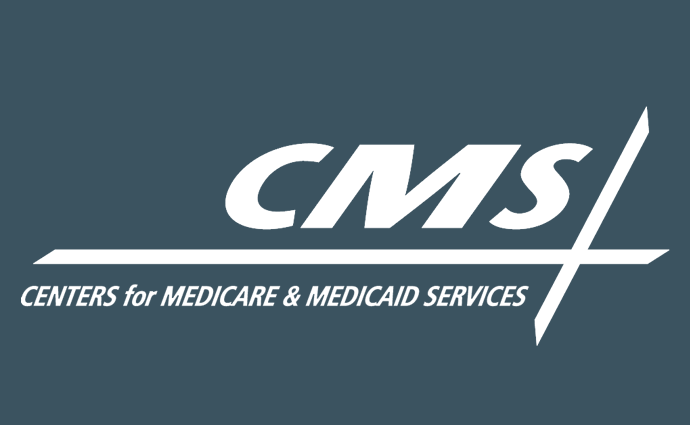CMS Retreats from 2022 Payer-to-Payer Data Exchange Enforcement
The agency determined that the formatting requirements for the payer-to-payer data exchange were too complex.

Source: CMS Logo
- Updated 9/20/21: This article has been updated to include comments from Alexander Dworkowitz, partner at Manatt Health.
CMS announced in its interoperability guidance that it would not be enforcing the payer-to-payer data exchange rule on January 1, 2022.
“As a matter of enforcement discretion, CMS will not take action to enforce compliance with these specific provisions until future rulemaking is finalized,” the guidance explained.
CMS said that the original regulation created complications for payers by requiring them to be able to conduct data exchange in various formats. The agency cited payers’ concerns about the toll that such a policy could place on administrative burden and data quality.
The agency added that this policy will not affect any other interoperability regulations’ timelines. However, Alexander Dworkowitz, partner at Manatt Health, told HealthPayerIntelligence that, despite the lack of enforcement on the payer-to-payer data exchange front, the policy will still have an impact on the industry's overall progress toward interoperability.
READ MORE: ACHP: Extend Transparency, Interoperability Compliance Deadlines
"The two other main components of the interoperability rule are still in effect," Dworkowitz noted. "Those require plans to make much of their information available to members so those members can download data via apps, and hospitals to send out admission and discharge notifications to other providers. So the rule is still having an important impact on data exchange. What will be different is there will be fewer disclosures between health plans, at least for the time being."
The payer-to-payer data exchange requirements are related to Medicare Advantage organizations, Medicaid managed care organizations, Children’s Health Insurance Program managed care entitites, and qualified health plans on the federally-facilitated exchange.
CMS urged payers to continue to prepare their payer-to-payer data exchanges despite this policy, encouraging those that are able to still aim for the January 1, 2022 implementation deadline.
Payers must convert data points to a Fast Healthcare Interoperability Resources (FHIR) format due to the Patient Access API final rule. The deadline for this task was July 1, 2021.
Payers are not required to use a FHIR-based API for the payer-to-payer data exchange. However, since they are already converting their data into this format and building Patient Access APIs, CMS suggested that payers might benefit from continuing their progress toward a FHIR-based API for payer-to-payer data exchange, even without the agency’s enforcement.
READ MORE: Going Beyond Compliance: How Payers Can Embrace Healthcare Interoperability
"It is really up to each payer to decide what’s best for their business," explained Dworkowitz.
"Some payers may want to continue to operationalize the payer-to-payer requirements under the theory that doing so is good for their members and also good for the payers themselves, since by sharing their own data they may find other payers are more willing to share data back. Others may seek to implement a portion of the payer-to-payer requirements but drop items that are particularly burdensome to implement. Still others may decide to abandon implementation of the payer-to-payer requirements entirely. But all plans need to remember that even though these requirements may not be enforced, HIPAA still requires plans to share data at the direction of members."
CMS indicated that the agency will issue new rules regarding this issue and that the requirement has been lifted until CMS finalizes those rules. The agency did not offer any indications regarding when it might release the newly finalized rules. Dworkowitz pointed out that there is already a backlog of rules regarding data sharing, although the payer-to-payer data exchange rule is unique in that CMS issued it.
Payers and payer organizations have been working on strategies to streamline data exchange in preparation for the interoperability rules.
For example, CAQH launched its CAQH Endpoint Directory early on in 2021 after a beta-testing process.
READ MORE: How a Directory Can Streamline Interoperability Rule Compliance
The directory aims to provide the information that payers need to perform data exchange with app vendors and Medicaid programs. Its primary goal was to support data exchange with vendors that members might use to access their health information.
However, CAQH leadership indicated that the platform could be useful for payer-to-payer data exchange as well. Payers could use the directory for needs such as member matching and collecting information from a member’s past payers.
Automated data transfer could also play a key role in the transition to widespread interoperability in the payer industry.
Beyond transferring data in a digital format, automated data transfer relies on a third-party aggregator—not the provider—to find key data points for payers.
In an automated data transfer process, payers partner with aggregators, submit a request for particular data points such as a claims adjudication or prior authorization, and the aggregator retrieves the data on the payer’s behalf through an automated process. The procedure can take approximately 15 to 30 seconds, as opposed to days or weeks in manual data transfer.
As CMS continues to hone the payer-to-payer data exchange rules, payers now have the space to explore and test effective solutions without the pressure of a January 1, 2022 deadline.
